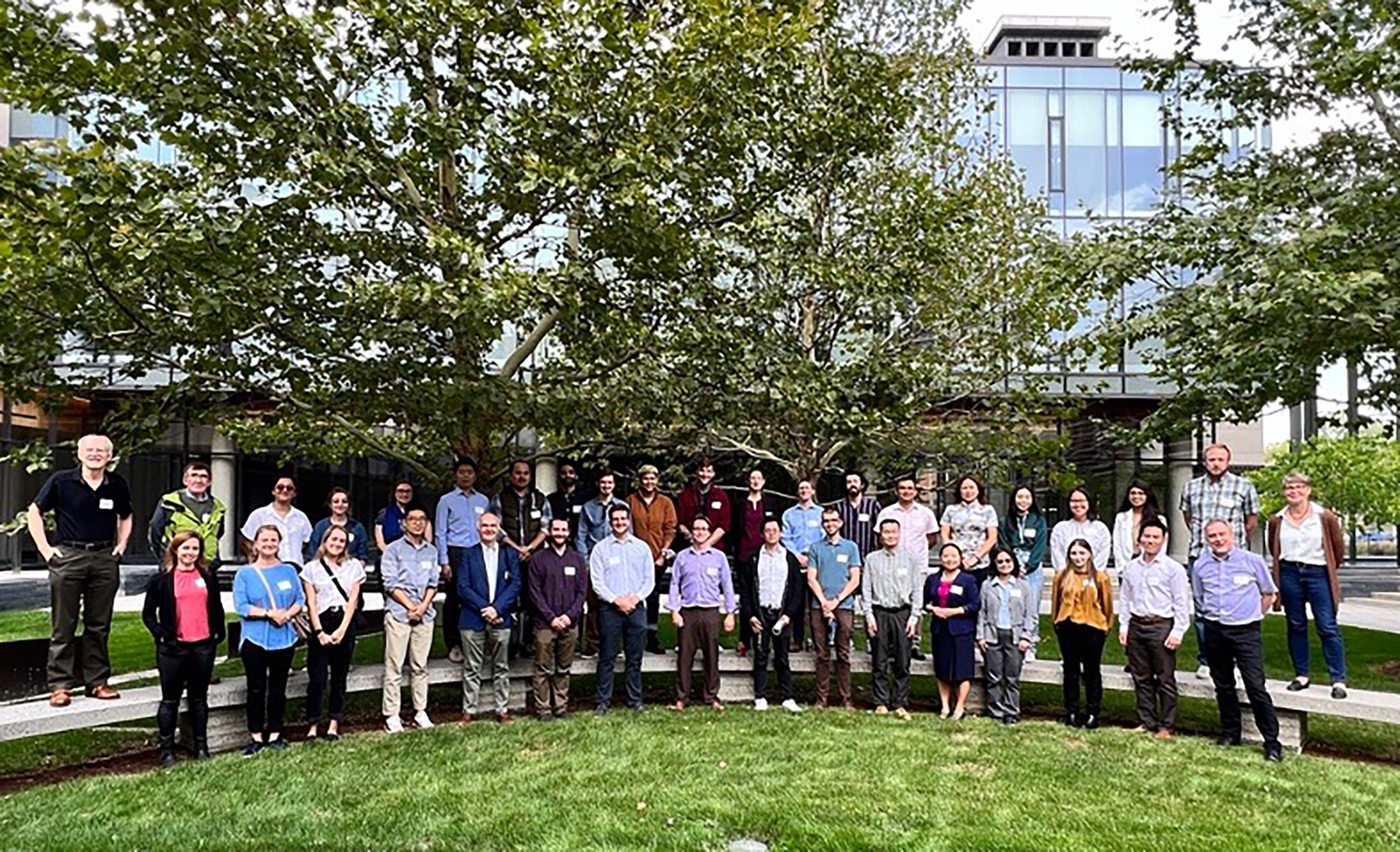
By Nancy Goucher, Knowledge Mobilization Specialist, Water Institute
The Microplastics Fingerprinting project hosted its first in person, annual meeting in Waterloo on September 16, 2022. Over 40 researchers, students, and collaborating partners gathered to discuss ways to better support research integration, hear about the needs and perspectives of water practitioners, and to collectively fine-tune our communication and knowledge mobilization tactics.
Philippe Van Cappellen, the project’s Principal Investigator, began by reminding us of the urgency of the issue at hand. The extremely slow rate of degradation coupled with a very low recycling rate (9 per cent), has created an environmental tragedy where plastic now contaminates virtually every river, lake and beach in the world. The problem is expected to accelerate with manufacturers planning on doubling plastic production by 2050. Furthermore, considering that microplastics can break down into nanoplastic particles – that have been shown to be able to cross the blood-brain barrier – the challenge becomes an even greater concern for human and environmental health.
With this larger context in mind, we discussed the objectives of the Microplastics Fingerprinting research project. By quantifying and tracing the movement of microplastics in our watersheds, we hope to support greater awareness of the magnitude of the problem and identify strategies for mitigating associated risks. Our efforts to standardize methods of quantification (such as whether we measure particles by weight or number), will hopefully enable greater collaboration among microplastic researchers as it allows them to more accurately compare and aggregate findings.
At the meeting, we shared highlights from our research to date. We have been validating new methods of microplastic identification including the testing and continued development of technologies and techniques such as DNA aptamers, Raman spectroscopy, FTIR spectroscopy, LDIR spectroscopy, and microwave sensors. As a result, we have been able to speed up the process of analyzing plastic samples. We have also been creating libraries of chemical spectra for these spectroscopy techniques (I.e., Raman, FTIR and LDIR) that can help researchers fingerprint the identities, potential source(s) and extent of degradation of plastic particles found in the environment and created a metadata template that has been shared with microplastics researchers across Canada and the US to help standardize how microplastics characterization data is captured and described.
Finally, we initiated a conversation with our partners to determine if there are any changes and/or additions we can make to our research program that would strengthen the applicability of our findings. We heard from municipalities who are starting to get questions from concerned residents about microplastics in their water. Nonprofit organizations are looking for data and information that can help capture the magnitude of the problem at a local scale, which could be useful in public communications. Other partners involved in developing microplastic clean up technologies, are asking where microplastics tend to build up in watersheds, so they can better concentrate their efforts.
Overall, the meeting was a great opportunity to bring together those who often think about microplastics from a variety of perspectives. We will continue to support this type of collaborative dialogue for better, more applicable outcomes for all involved.